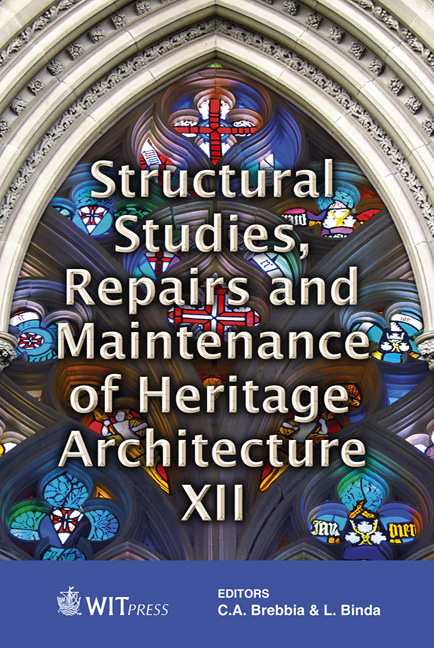Conservation Philosophy In Action: Examples Of Structural Intervention In The United Kingdom And The Export Of National Practices
Price
Free (open access)
Transaction
Volume
118
Pages
11
Page Range
3 - 13
Published
2011
Size
1,209 kb
Paper DOI
10.2495/STR110011
Copyright
WIT Press
Author(s)
J. D. Miller
Abstract
This paper states principles of structural conservation as held in the UK, examines them in the context of project examples within the country and looks at recent cases where the same ideas have been applied to projects overseas. It concludes by asking how our own national techniques should be translated to other countries. The origin of conservation philosophy and principles in the UK is examined, beginning with the nineteenth century activist William Morris. The basic principles considered include an options appraisal, the principle of reversibility and need to keep faith with use of original materials and load paths. The application of principles is briefly examined through projects that include conservation in the Palace of Westminster, ironwork repairs at Tynemouth Station in Newcastle, new facilities at Wells Cathedral and the restoration of the landscape around Chiswick House in London. The export of these principles is examined through projects on stone buildings in Abu Dhabi and Trinidad. The paper concludes that the UK approach may vary slightly from others because of a background of low seismic activity and simple interventions, but that international practice remains a balanced skill, marketable across frontiers. Keywords: William Morris, conservation principles, reversibility, options appraisal, minimum intervention, national practice, seismic retrofitting.
Keywords
William Morris, conservation principles, reversibility, options appraisal, minimum intervention, national practice, seismic retrofitting




